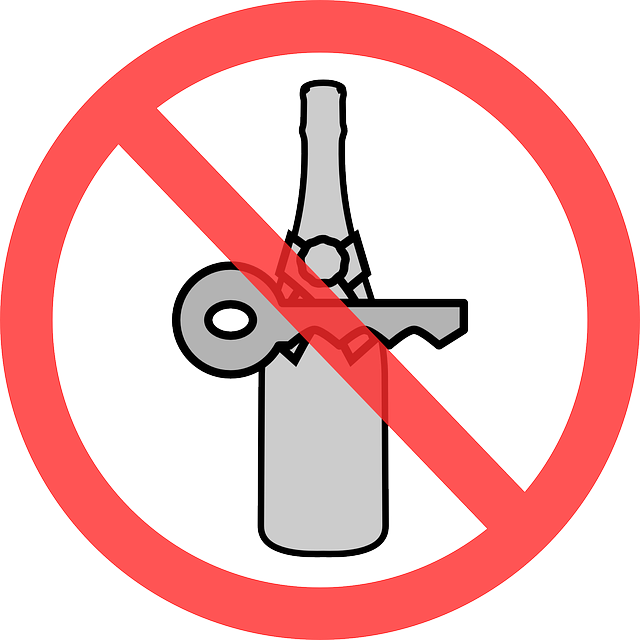Homeownership offers ex-offenders a powerful pathway to break the cycle of recidivism by providing financial security, community integration, and a stable environment for personal growth. It acts as an effective Recidivism Reduction Strategy by encouraging responsibility, stability, and positive lifestyle changes. This approach, combined with comprehensive support services and policy interventions like incentives for responsible borrowing, disrupts criminal behavior patterns, reduces prison populations, and fosters safer communities. By addressing housing instability—a key barrier to reentry—and promoting homeownership, society can empower ex-offenders to rebuild their lives and contribute positively to their communities.
“Home ownership, more than just a roof over one’s head, is a powerful tool for asset protection and social mobility. This article delves into the multifaceted benefits of homeownership, focusing on its role in reducing recidivism—a pressing issue impacting individuals and communities. We explore strategies to mitigate recidivism, emphasizing the significance of stable housing in rehabilitation efforts. Additionally, we examine policy initiatives promoting supportive housing and discuss the long-term positive effects of homeownership as a catalyst for successful social reintegration.”
- Understanding Home Ownership as an Asset: Benefits and Potential
- Recidivism and Its Impact on Individuals and Society
- Strategies to Reduce Recidivism: A Comprehensive Approach
- The Role of Stable Housing in Rehabilitation Programs
- Policy and Community Initiatives for Supportive Housing
- Long-term Effects: Homeownership as a Tool for Social Reintegration
Understanding Home Ownership as an Asset: Benefits and Potential

Homeownership is often regarded as a significant asset, offering individuals and families both financial security and a sense of stability. This is especially true in regions where rental properties are scarce or expensive, making homeownership a feasible long-term investment. As an asset, a house can provide a shield against the unpredictable fluctuations of the market, serving as a solid foundation for building wealth over time. With proper maintenance and strategic financial planning, homeowners can benefit from increased property value, which is particularly valuable when considering future financial goals or retirement.
Beyond the financial aspects, homeownership also contributes to reducing recidivism rates in several ways. Owning a home provides individuals with a greater sense of responsibility and community attachment, encouraging positive behavior and long-term thinking. Additionally, it offers a stable living environment, which is crucial for personal growth and family development, potentially diverting individuals from high-risk activities that could lead to legal issues or reincitement.
Recidivism and Its Impact on Individuals and Society

Recidivism, or the tendency for individuals to reoffend after serving a prison sentence, is a significant concern with far-reaching implications. It not only impacts the reintegration of ex-offenders into society but also poses challenges for community safety and public resources. When individuals return to crime, it often leads to further incarceration, exacerbating the cycle of poverty and marginalization. This recurring pattern can be attributed to various factors such as lack of social support, limited access to employment opportunities, and insufficient reintegration programs.
Addressing recidivism is crucial through effective reduction strategies. Implementing comprehensive programs that focus on education, vocational training, mental health services, and supportive housing can empower ex-offenders with the necessary tools for successful reentry. These initiatives aim to disrupt the cycle of criminal behavior by fostering a sense of community, promoting positive social interactions, and encouraging productive lifestyles. By investing in recidivism reduction, society can not only decrease prison populations but also build safer and more inclusive communities.
Strategies to Reduce Recidivism: A Comprehensive Approach

Reducing recidivism requires a multifaceted approach that addresses the root causes of criminal behavior. One effective strategy is providing ex-offenders with stable housing through programs like supportive housing or second chances initiatives. Homeownership can serve as a powerful motivator and tool for change, encouraging individuals to turn their lives around. Offering financial education and assistance in purchasing or maintaining a home can empower formerly incarcerated individuals to break free from the cycle of poverty and crime.
Additionally, Recidivism Reduction Strategies should encompass comprehensive support services such as job training, mental health counseling, and substance abuse treatment. By integrating these services into housing programs, we can ensure that ex-offenders have access to the resources needed to rebuild their lives, maintain stable employment, and remain law-abiding citizens. This holistic approach not only reduces the likelihood of reoffending but also fosters positive contributions to communities.
The Role of Stable Housing in Rehabilitation Programs

Stable housing plays a pivotal role in successful rehabilitation programs, especially as part of strategies to reduce recidivism. For individuals who have been incarcerated, providing them with a stable home environment post-release can significantly impact their reintegration into society. This stability acts as a foundation for personal growth and helps break the cycle of poverty and crime that often leads to recidivism.
Housing instability is a significant barrier to rehabilitation. Without a secure place to call home, formerly incarcerated individuals may struggle to maintain employment, access educational opportunities, or participate in counseling and support groups—all crucial components of successful rehabilitation. Stable housing enables them to focus on their personal development, address underlying issues contributing to criminal behavior, and build positive relationships with family, friends, and the community.
Policy and Community Initiatives for Supportive Housing

Policy interventions play a vital role in promoting homeownership as a protective asset, especially for vulnerable populations. Governments can implement Recidivism Reduction Strategies by offering incentives and subsidies to encourage responsible borrowing and sustainable housing practices. These initiatives aim to empower individuals to build equity through homeownership, which has proven to be a robust measure of financial stability and community integration.
Community-led efforts also contribute significantly to this goal. Local organizations often develop programs that address specific housing needs, providing resources for first-time homebuyers and support services to prevent foreclosure. By fostering cooperative housing models and community investment, these initiatives create an environment conducive to stable residence and asset protection, ultimately reducing recidivism rates within the population.
Long-term Effects: Homeownership as a Tool for Social Reintegration

Homeownership, beyond being a significant financial investment, can act as a powerful tool for social reintegration and reducing recidivism among individuals who have served their time. For many ex-offenders, returning to society with a stable residence is a pivotal step towards reintegrating into their communities. The long-term effects of homeownership can be transformative, offering a sense of stability and normalcy that was perhaps absent during their incarceration. This stability is crucial in breaking the cycle of recidivism, as it provides individuals with a solid foundation to rebuild their lives and reestablish themselves within society.
By implementing homeownership as a Recidivism Reduction Strategy, ex-offenders can develop a sense of responsibility and commitment, skills that are transferable to various aspects of life post-release. Furthermore, the process of buying and maintaining a home encourages financial discipline, responsible borrowing, and long-term planning—all essential habits for successful reintegration into society. Thus, supporting individuals in achieving homeownership can be a profound step towards fostering their social welfare and preventing future criminal behavior.
Home ownership, as a powerful asset, offers a compelling path toward breaking the cycle of recidivism. By providing stable housing and fostering community integration, individuals can achieve significant personal growth and contribute positively to society. Implementing effective Recidivism Reduction Strategies, such as supportive housing initiatives and policy reforms, is crucial for creating a safe and rehabilitative environment. This holistic approach, combined with personalized programs, can lead to successful social reintegration, transforming lives and strengthening communities.






